It's spring and that means tomato planting time. We're again talking tomatoes and their garden companions this week and loads of other jobs to do.
We're planting tomatoes, dividing Cymbidiums, and spreading the mulch to make the most of watering. We'll take the time to admire wisteria and check out what's on in the gardening world around us.
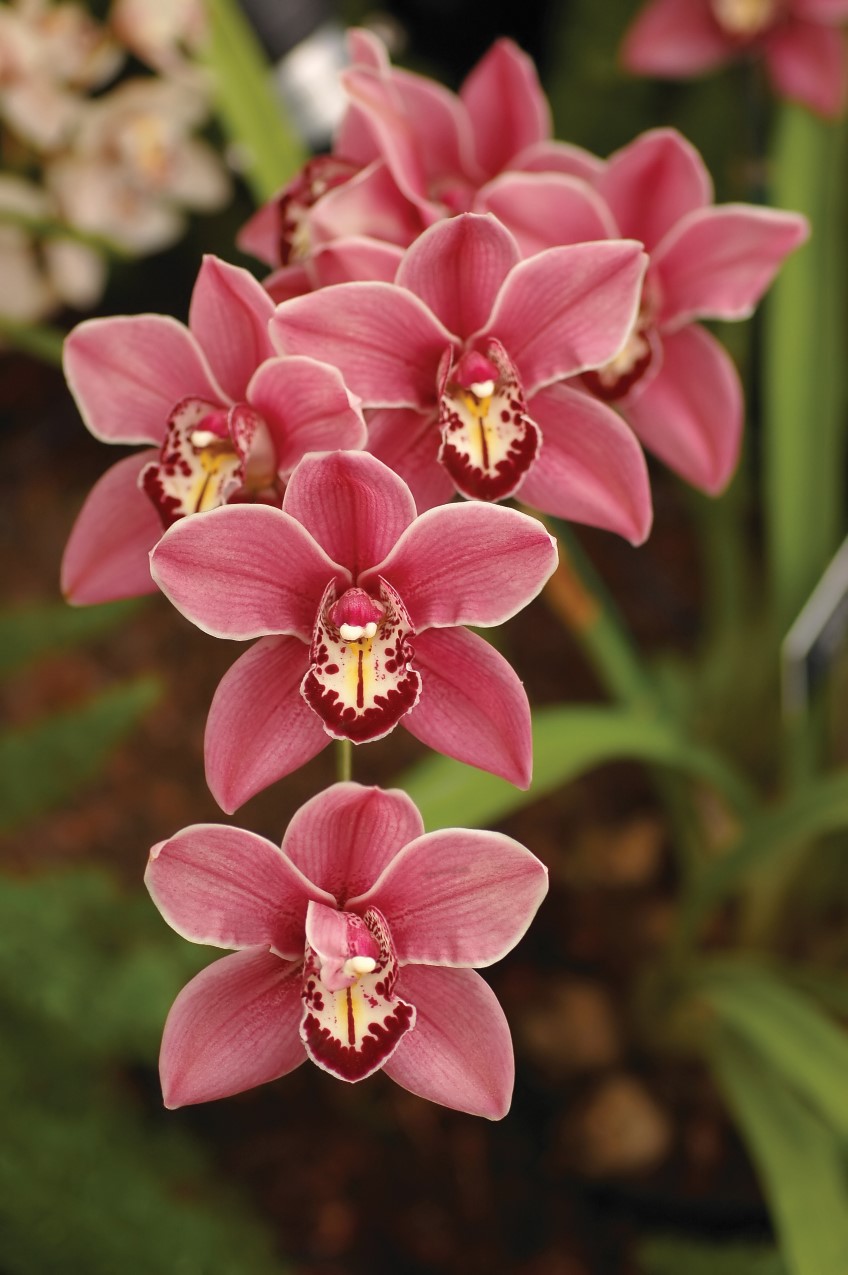
Divide Cymbidiums now
Questions of the week
Q: When do I divide my Cymbidium orchid?
Perfect timing - right now!
Divide Cymbidium orchids after they have finished flowering. Remove spent flower spikes from the base. Using a sharp knife (or pitchfork if necessary)
gently divide orchid into divisions of 3 to 5 pseudobulbs. Replant into an open, coarse orchid compost, water in well with a weak seaweed solution
and place into a shady position. After four weeks, start a fortnightly drench with a soluble fertiliser such as Strikeback for Orchids. Bring your
Cymbidium out into the morning sun from February onward to encourage new blooms for the following flower season.
Q:How do I treat borer?
Unfortunately, there are no chemicals available for home gardens that control borers. Mechanical treatment is best. Remove frass and sawdust to expose
borer hole. Then poke fuse wire or similar into the hole. Once satisfied control has been achieved block up hole with candle wax. Fertilise tree, water
in with seaweed solution and water well and mulch.
When borer strikes it can be a sign your trees are under stress needing some TLC, they are susceptible to attack, bird populations are low or from just
bad luck. Whatever the reason urgent action is required. In large trees it is always advisable to obtain expert arboricultural advice and don't delay.
With smaller trees like native shrubs, citrus, fruit trees, ornamentals like crepe myrtles or camellias, urgent action is also advised.
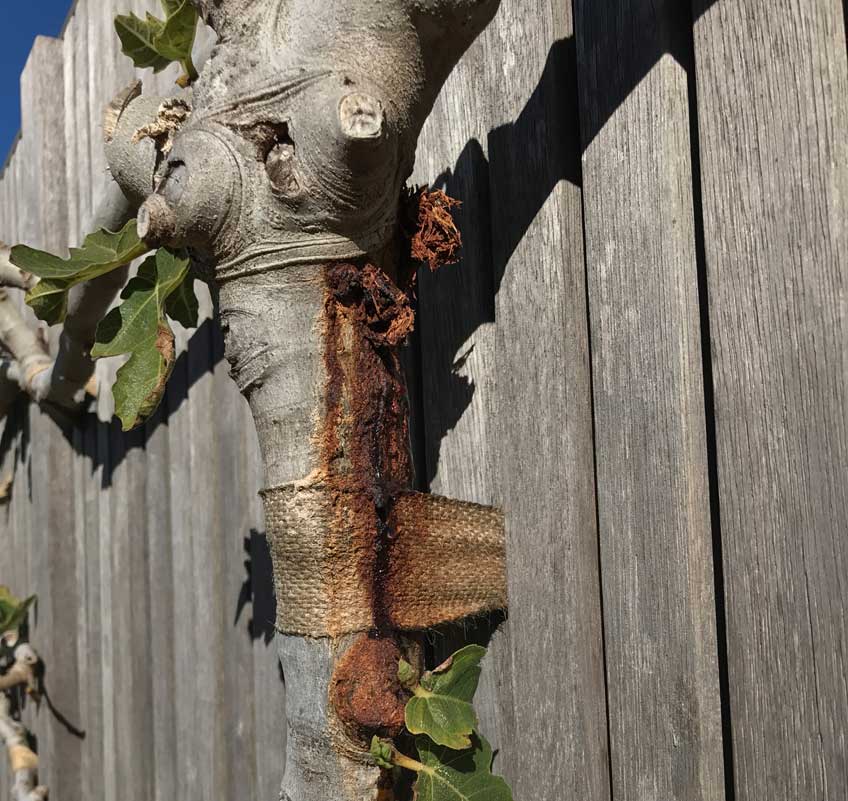
Borer damage. Photo - Graham Ross
Q:What's wrong with my tomato?
This week was full of tomato questions, and we expect more in the weeks to come. Tomatoes are very easy to grow and reward a little gardening effort in
spades with baskets of fruit through the summer. But there are a few pitfalls to avoid that can lead to some of the most common tomato problems, like
wilt virus, end rot, fruit fly damage and grubs.
So we put together a helpful article identifying and discussing the most common tomato problems and their solutions. Check out the full article, 'How To: Fix your tomatoes'.
We're giving away a 25cm Tomato seedling with every Garden Clinic Platinum Membership this week, plus a swag of goodies to keep it happily growing strong. Get yours when you join or extend your membership today.
Check out the Tasty Tomato Pack here.
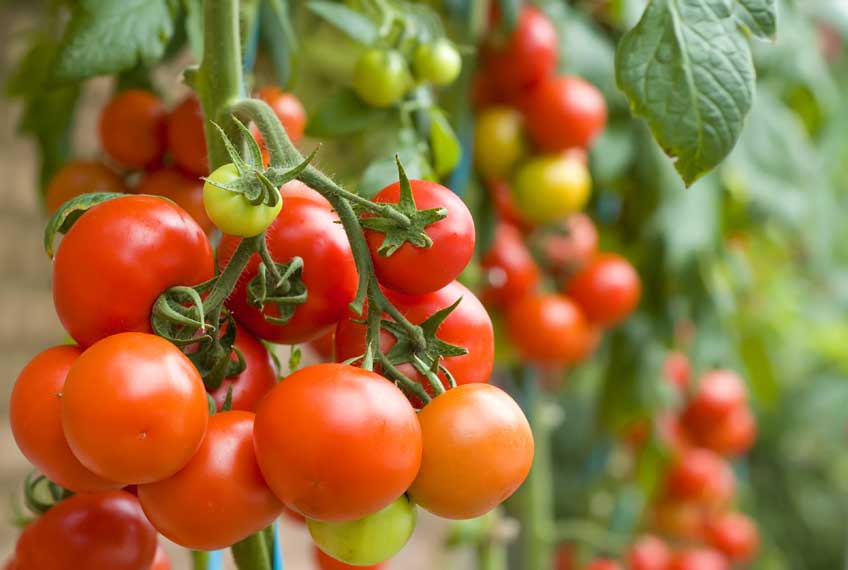
It's Tomato Time!
It's time to....
We are excited about the unfurling new growth and stunning spring floral displays. Here are a swag of jobs, tips, tricks and things to look out for in
the garden this September.
Temperate gardens - It's time to boost spring growth above and below the ground by nourishing garden soil with a layer of compost 35 mm thick and a dose
of organically based fertiliser. Click here for more spring jobs in the temperate garden
In the subtropics - Clear and prepare vegetable beds for summer crops. Check soil pH and if below 6.5, topdress with garden lime at the rate of one handful
per square metre. Water in. Two weeks later, topdress beds with a quality organic garden fertiliser containing ground rock minerals and humates (humic
acid), and compost or composted stable manure and dig into beds with a fork. Click here and read more Arno King's advice in the subtropical garden.
Flowering now
Rose Mallows Hibiscus
Want big blousy flowers? It’s hard to go past the new rose mallows, Hibiscus moscheutous, which offer truly plate-sized blooms on a fast-growing,
bushy perennial that grows to about 1m. This one is ‘Cherry Cheescake’, which makes a dramatic show in late summer and autumn featuring ruffled white
petals tipped with magenta and a cherry-red centre. It’s new to the Hibiscus ‘Summerific’ collection from Proven Winners, all of which love moisture
(the other common name for these plants is swamp mallow, so there’s a hint!) and respond to generous feeding.
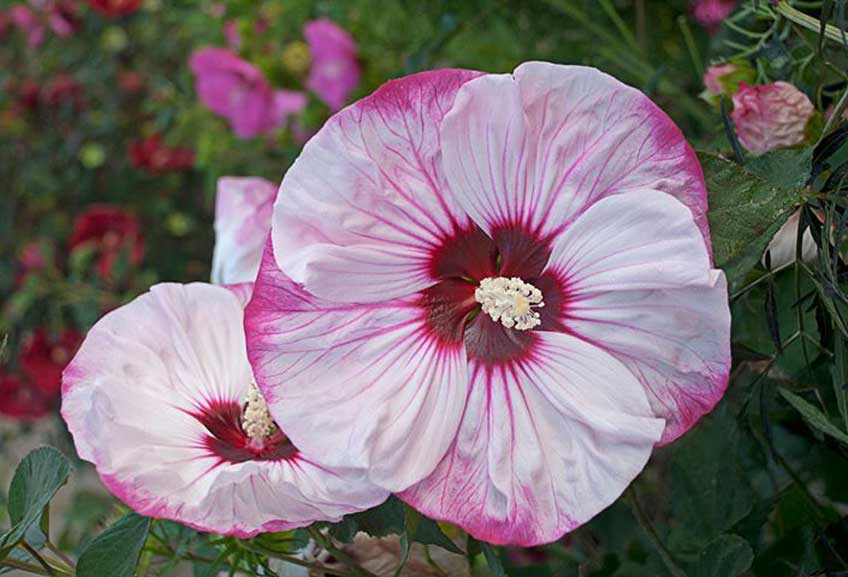
Rose Mallows Hibiscus, ‘Cherry Cheescake’
Leptospermum laevigatum, Coastal Tea Tree
A very hardy coastal, frontal dune small tree, 4-5m tall X 3m wide with white bee attracting flowers in spring. Grows in a wide soil pH range from acid
to alkaline with a sandy to clay loam profile so long as it’s well drained. Soft grey leaves similar colour to olive trees and also grows well in a
large tub.
Suited a wide climatic range from sub-tropical, cool and warm temperate to Mediterranean, and semi-arid zones. It forms a compact open headed small tree
in light shade or full sun and withstands windy, exposed gardens. Also tolerates light frost
Can be trimmed into a hedge, or even topiary. Bonsai specimens have been seen. Used in erosion control, street trees and as a quick growing wind break.
Several dwarf varieties around including:-
L. l. ‘Fore Shore’, excellent as a replacement for Box hedging, grows tight, compact to 40cm x 1m
L. l. Shore Tuff’, 50cms x 1.5m wide
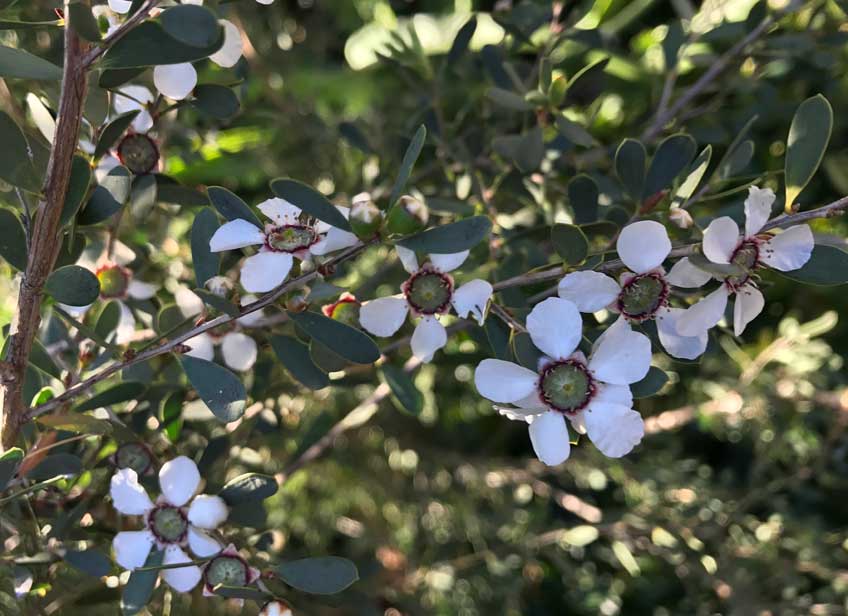
The Coastal Tea Tree, Leptospermum laevigatum. Photo - Graham Ross
What's on this week
Toowoomba Carnival of Flowers
The locals love it and visitors travel from all over the country to be part of it. Now in its 68th year the award-winning Toowoomba Carnival of Flowers
is on this weekend, with the carnival parade Saturday afternoon. Spectacular gardens, country touring, live music and local food & wine plus much
more. Visit Toowoomba Carnival of Flowers for details
Sydney Garden Show
In it's first year the Sydney Garden Show comes to Rose Hill
Race Course this weekend with outdoor living exhibits, gardening products and plants for sale. Visit their website, Sydney Garden Show for details
Plant Lovers Fair
Sydney and Central Coast gardeners are all looking forward to the wonderfull Plant Lovers Fair at Kariong north of Sydney next weekend. A bustling little
fair with a huge array of plants for sale direct from the nurseries that lovingly grow them, The Plant Lovers Fair is an event not to be missed.
Check out their website, Plant Lovers Fair for more
details and for tickets
On the road
Gardens destroyed by Hurricanes
Gardens are often severely hit by hurricanes in the Gulf of Mexico and the southeastern states of the USA. But the the 2017 Hurricane season has been particularly
severe, with hurricane Harvey bringing disasterous flooding to Texas, and Hurricane Irma - one of the most severe tropical storm ever recorded.
In Florida gardens like the historic Cummer Gardens remain closed to the public after sustaining significant damage and having been submersed in salt water
for over 24 hours during the storm.
The good news for our Mexico & Cuba travellers leaving later in October is that while Hurricane Irma made landfall on the north east coast of Cuba, Havana was not badly affected.
Off to Europe
Next week we say farewell to our Italy tour group, hosted by Sandra Ross. These lucky travellers are in for a real treat! They'll be visiting the classic
renaissance era gardens that Italy is famous for, enjoying the history, art, stunning scenery and fabulous food!
Want to see where they'll be going? Check out the Gardens of Italy tour itinerary here, or go to the Ross Tours website and have a look at our 2018 programme.,
Call Royce or Roslyn at Ross Tours on 1300 233 200.

Villa D'este. Photo - Gianluca Figliola Fantini.